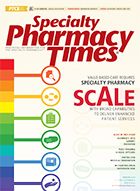Current Tech Hurdles in Specialty Pharmacy Lead to a Decrease in Effective Care
Lost within the fast-paced specialty pharmacy environment are updates to pharmacy software systems that can accommodate the ever-growing needs of patients.
The practice of specialty pharmacy is among the most high-touch processes in the outpatient pharmacy space. Efficient patient care coordination is necessary to ensure a continuous prescription journey, from concept to administration. However, lost within the fast-paced specialty pharmacy environment are updates to pharmacy software systems that can accommodate the ever-growing needs of patients.
Although some tools are found in bits and pieces among available prescription processing software, an all-encompassing suite remains elusive. These features should match or exceed standards set by accrediting bodies, such as URAC and the Accreditation Commission for Health Care (ACHC).
Below are some challenges that need to be addressed to improve patient management and overall prescription processing efficiency, along with potential solutions for how to accomplish this:
Lack of technologic solutions to overcome gaps in therapy
The high-touch nature of specialty medication prescription management yields a greater risk of human error, a risk that may lead to unwarranted gaps in therapy. As such, many specialty pharmacies look for creative technological approaches to patient management; however, they often utilize expensive, clunky software systems, or even Microsoft Office products, to track patients. Thus, without the ability to develop proprietary software, pharmacists and care coordinators alike are left longing for some sort of task-generating automated program that can direct focus toward the journey of the prescription and away from time-consuming ancillary processes. If thought is taken out of certain challenges, such as the ones listed below, both pharmacists and care coordinators can alleviate the worry of missing a step in the process and focus more on patient care.
Examples of processes that could be beneficial to automate would be:
- Prescription refill calls to patients, in which priority is assigned to care coordinators by chronology and driven by days’ supply remaining
- Assignment of prior authorization follow-up calls with the provider’s office
- Assignment of patient follow-up calls if demographic or insurance information is missing
- Automated faxes resent to end user if clinical or demographic information is missing
- Automated status updates faxed or securely e-mailed to the prescriber to notify of changes in prescription status
Difficulty tailoring patient experience based on disease state
A lack of automation couples with an inability to monitor patients without assistance from external software and personnel involvement. Specialty patients are named as such not just because the medications are expensive and should be handled carefully but because each disease state is complex and requires a unique approach to patient monitoring. To offer a truly tailored experience to patients, software companies should enable customizable patient tracks. This would allow clinical staff to develop monitoring and follow-up checkpoints for both the patient and the prescriber, organized by disease state.
As such, once a patient is entered into a disease state track, the pharmacy software system should be able to utilize some of the task-centric automation concepts listed above to carry the patient along the disease state track timeline. Monitoring parameters, refill calls, outcome monitoring, etc, should be generated as scripted tasks that, upon completion by the pharmacist or care coordinator, move the patient along to the next phase of the monitoring timeline.
Therefore, at any point in time, a patient may be assessed by their place in the monitoring timeline, and all information should be readily available for review in a concise summary. Additionally, both negative and positive patient outcomes of drug therapy and disease state management could be recorded within each track and addressed appropriately. The ability to perform a snapshot view of each patient poses a potential benefit for prescribers who show interest in cultivating strong care coordination with the pharmacy.
The need to utilize several platforms to maintain the status quo with prescription management
A common theme in most specialty pharmacies is the use of multiple platforms to support an appropriate level of patient management, more so to maintain the path of the prescription itself. This involves using a combination of prescription processing software, an external patient management application, and shared documents with manual dictation of prescription status.
In a setting such as this, the risk for human error is high and accountability is low. Pharmacies seeking strong quality assurance programs that match expectations for URAC and ACHC accreditation must ensure their employees maintain a high level of awareness when traversing patient management platforms. Missing information could be damning, not only for pharmacy relationships with provider offices but also for the patient.
Without the ability to utilize some of the above solutions in unison, specialty pharmacies must ensure staff are properly trained at a high level. These ideas are not meant to replace human involvement, but to divert attention away from extraneous and unnecessary tasks toward an approach more focused on patient care. Although there are prescription processing platforms available today that contain some of the ideas discussed in this article, there will likely be a continued push to include this level of attention to the prescription process. Time-wasting procedures are costly.
With wasted employee effort, poor reimbursement for independent specialty pharmacies, and the daunting possibility of retroactive direct and indirect remuneration fees, pharmacies should embrace any technological efficiencies available to advance the capability of patient care.

